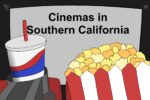Ennio Morricone was a composer with a diverse 66-year-long career. He created soundtracks for about 400 films, including the historical drama “The Mission,” the horror movie “The Thing” and the gangster film “Once Upon a Time in America.” Because of this, Morricone is considered to be one of the best and most prolific composers ever. His theme for “The Mission” made it onto the American Film Institute’s list of the greatest film soundtracks of all time, and he was nominated for an Oscar five times. He won an honorary Oscar in 2007 and then won another one for his scoring of “The Hateful Eight” in 2016. Although Morricone worked with Hollywood, and though Hollywood offered him his own villa, he turned it down and lived his whole life in Rome.
Morricone started out playing the trumpet, an instrument that features in several of his Western scores. By the time he was six, he was writing short musical compositions. He officially began his career by writing music for radio plays. He scored his first film in 1961, composing the soundtrack for Luciano Salce’s film “Il Federale.” None of Morricone’s pieces really became well-known until he agreed to compose a score for his old schoolmate, Sergio Leone.
Sergio Leone directed many movies, most of which would become known as “spaghetti Westerns.” These were Western films that were written and directed by Italians and filmed in Spain. Spain’s Tabernas desert acted as a visual stand-in for the American Southwest and parts of Mexico. Leone directed the Dollars Trilogy, which consisted of “Per un pigni di dollari” (“A Fistful of Dollars”), “Per qualchi dollari in piu” (“For a Few Dollars More”) and “Il buono, il brutto, il cattivo” (“The Good, The Bad, and The Ugly”). Each movie in the Dollars Trilogy was connected, but not in a concrete way; it’s debated whether or not the main character is the same man in each film. Morricone composed the scores for each movie, as well as other Westerns.
The opening theme to “The Good, The Bad, and The Ugly” is probably the most well-known of Morricone’s works. The unique tune — and sounds similar to it — have been used as a shorthand for the Wild West, with its barren deserts and showdowns at high noon. The theme has been used to signify confrontations, such as in “The Simpsons,” or just the idea of the Old West itself, like in “The Lego Movie.”
Morricone was able to achieve such a unique and recognizable Western sound through his use of non-traditional sounds. Because spaghetti Westerns were often shot cheaply and didn’t have a large budget, they couldn’t afford the more traditional orchestral soundtracks. Morricone used instruments like electric guitars, harmonicas, flutes and jaw harps. He also used sound effects, such as whip cracks, bells and gunshots. Finally, Morricone incorporated wordless vocals such as whistling. Morricone often worked with the Italian singer Edda Dell’Orso to give his pieces, especially “Once Upon a Time in the West” and “The Ecstasy of Gold,” more emotion. Though the producers of these Italian Westerns couldn’t afford the typical Western orchestras, Morricone worked with what he had and created a unique sound that is forever tied to the image of the Wild West.
Morricone’s influence can be seen in other musical works. The theme for the “Star Wars” spinoff “The Mandalorian” is one example. The series takes a lot of inspiration from the Western genre, so this is very fitting. Hans Zimmer’s electric guitars in “Parlay” from the “Pirates of the Caribbean” soundtrack are reminiscent of the guitars in “Man with a Harmonica.” The band Muse takes some cues from Morricone in their song “Knights of Cydonia” and they eventually paid tribute to Morricone by playing their version of “The Ecstasy of Gold” before concerts.
Despite the fame of his Western soundtracks, Morricone didn’t want to be known just for that work. He considered the fact that many only knew him for that particular genre disappointing, because he composed pieces for films of every genre. Westerns only made up around 8% of his work.
“Il Federale,” the first film Morricone wrote a score for, was a historical film set in Fascist Italy. “Days of Heaven” and “The Mission” were also historical films, with the former taking place in 1916 Texas and the latter taking place in 18th-century South America. “The Untouchables” and “Once Upon a Time in America” fell into the crime genre; “The Untouchables” was about a federal agent setting out to stop Prohibition-era gangster Al Capone, while “Once Upon a Time in America” was about a former gangster. “The Thing” was a sci-fi horror movie set in an isolated Antarctic research base. The soundtrack for “The Thing” was very different from a lot of Morricone’s other work in that it used synths to create an eerie, suspenseful mood. Morricone also worked outside of film scores, collaborating with artists such as Joan Baez and Mina.
Director Quentin Tarantino has used a few of Morricone’s Western scores for his films, such as “L’Arena” in “Kill Bill” and “The Braying Mule” in “Django Unchained.” Morricone had also composed original scores for some of Tarantino’s other movies, like “Rabbia e Tarantella” in “Inglorious Basterds.”
Morricone composed his penultimate score for another one of Tarantino’s Westerns, “The Hateful Eight.” The main theme was more subdued and slightly more ominous than his earlier Western scores, using cymbals and bassoons. The theme fit the tone of the film, which, while a Western, also had elements of drama, mystery and crime.
Ennio Morricone died in Rome on July 6, 2020, at the age of 91. This July marks the second anniversary of his death. Morricone left a very large portfolio of music behind, one that spanned genres. Whether it was the guitar and vocals of his Western soundtracks or the synth of his horror scores, Morricone contributed massively to cinema with his work.

















